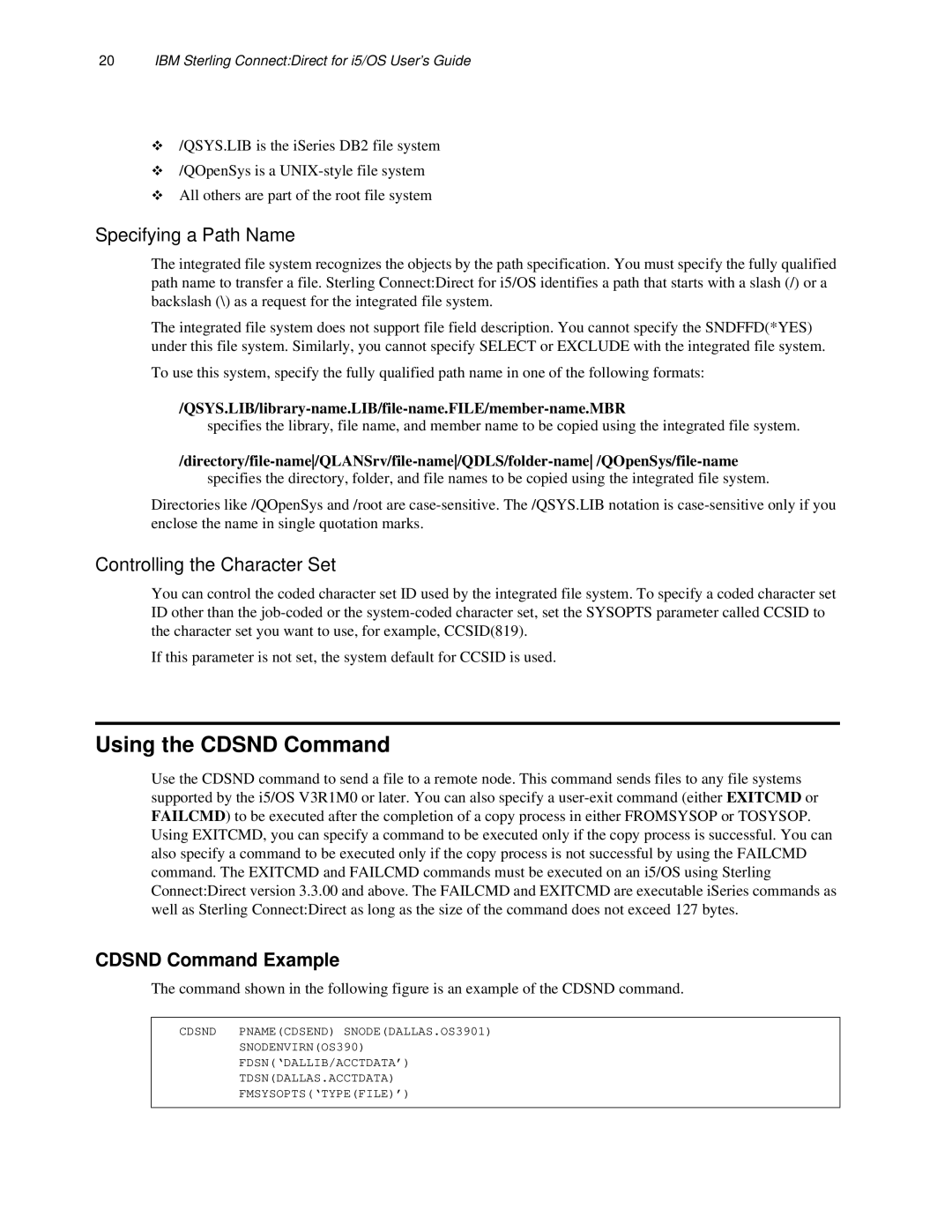
20IBM Sterling Connect:Direct for i5/OS User’s Guide
/QSYS.LIB is the iSeries DB2 file system
/QOpenSys is a
All others are part of the root file system
Specifying a Path Name
The integrated file system recognizes the objects by the path specification. You must specify the fully qualified path name to transfer a file. Sterling Connect:Direct for i5/OS identifies a path that starts with a slash (/) or a backslash (\) as a request for the integrated file system.
The integrated file system does not support file field description. You cannot specify the SNDFFD(*YES) under this file system. Similarly, you cannot specify SELECT or EXCLUDE with the integrated file system.
To use this system, specify the fully qualified path name in one of the following formats:
/QSYS.LIB/library-name.LIB/file-name.FILE/member-name.MBR
specifies the library, file name, and member name to be copied using the integrated file system.
Directories like /QOpenSys and /root are
Controlling the Character Set
You can control the coded character set ID used by the integrated file system. To specify a coded character set ID other than the
If this parameter is not set, the system default for CCSID is used.
Using the CDSND Command
Use the CDSND command to send a file to a remote node. This command sends files to any file systems supported by the i5/OS V3R1M0 or later. You can also specify a
CDSND Command Example
The command shown in the following figure is an example of the CDSND command.
CDSND PNAME(CDSEND) SNODE(DALLAS.OS3901)
SNODENVIRN(OS390)
FDSN(‘DALLIB/ACCTDATA’)
TDSN(DALLAS.ACCTDATA)
FMSYSOPTS(‘TYPE(FILE)’)
